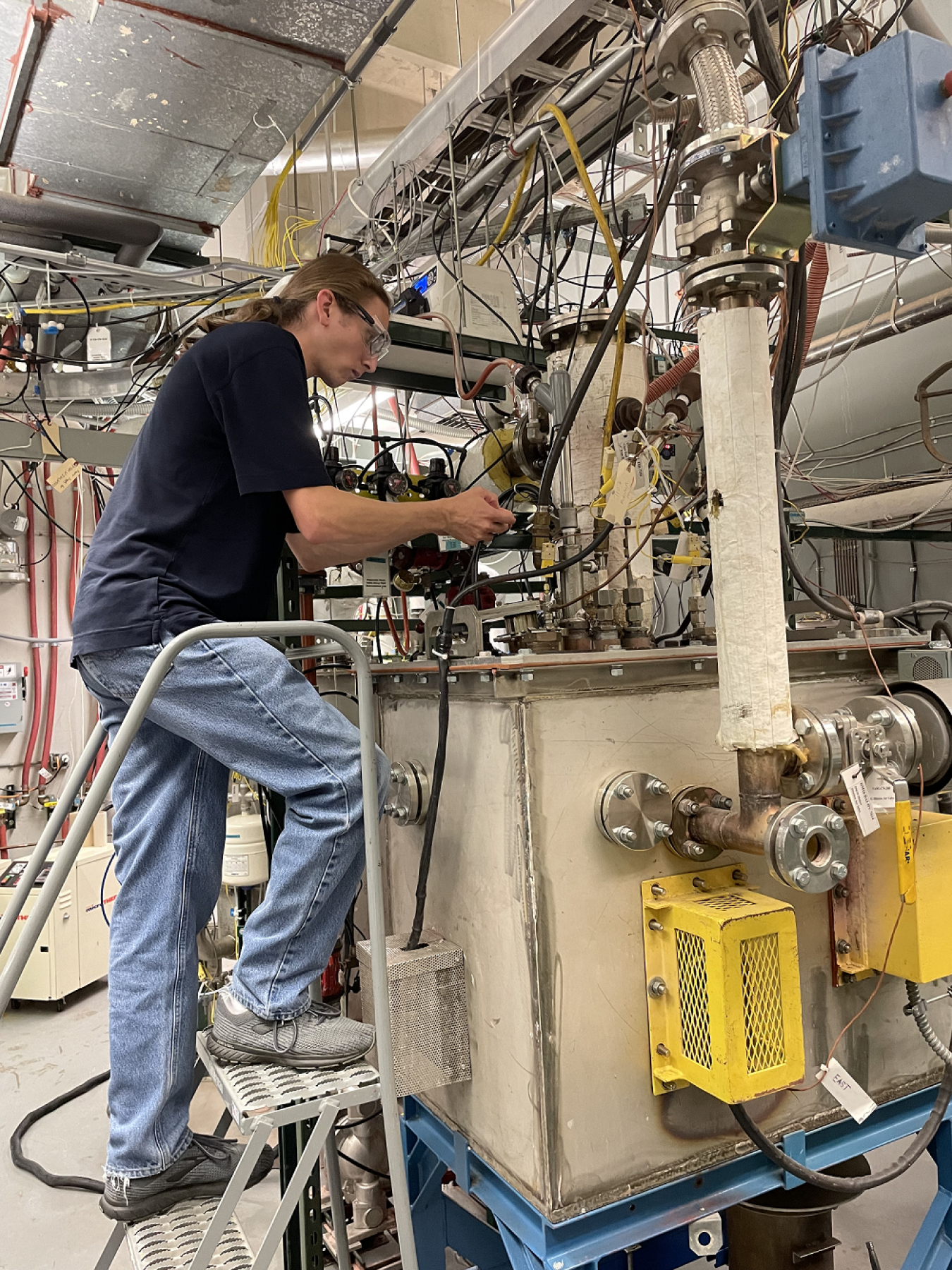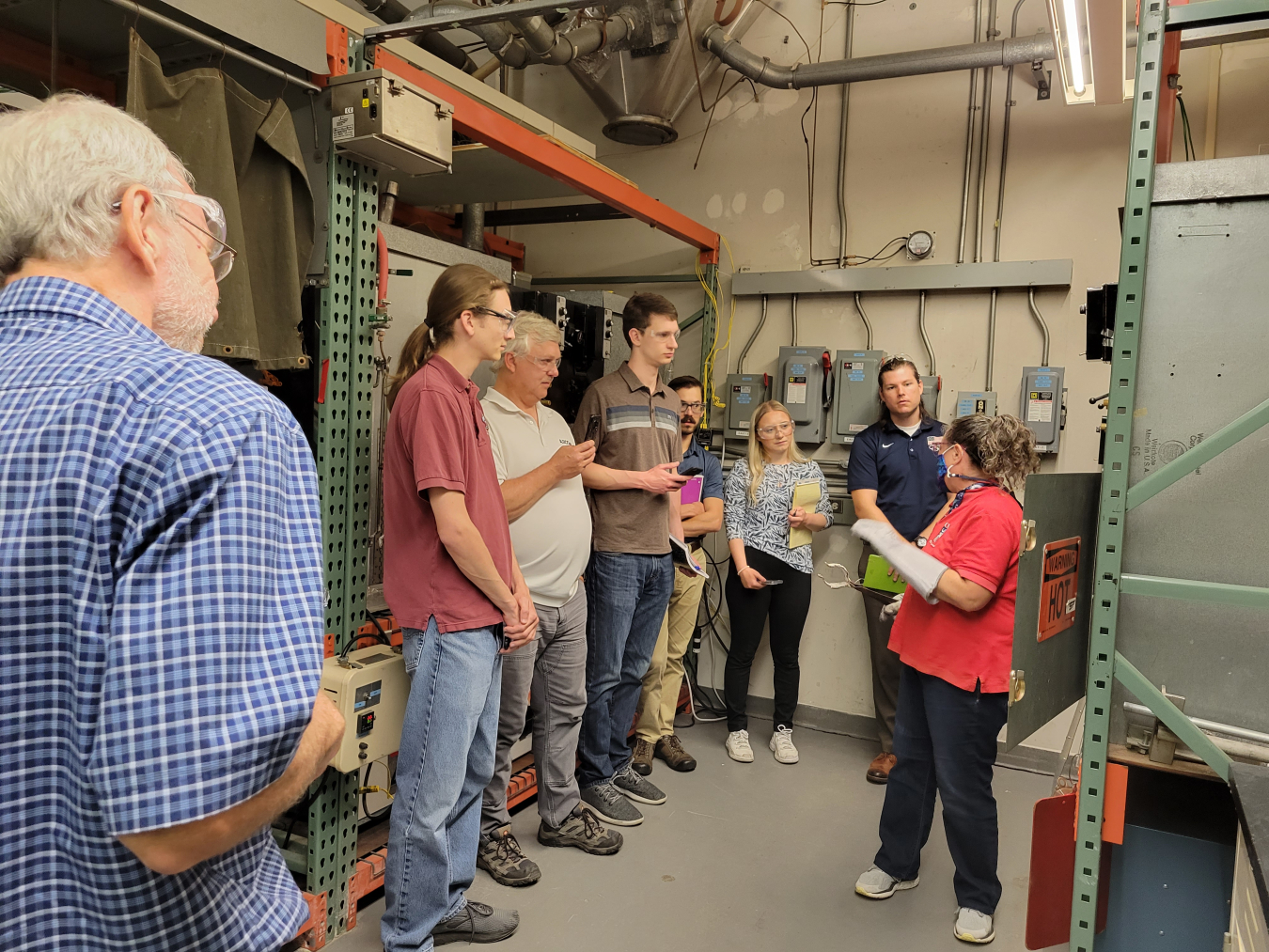Operations and commissioning team members from the Waste Treatment and Immobilization Plant (WTP) at the Hanford Site enhanced their knowledge of melters during a recent visit to the Vitreous State Laboratory (VSL) at The Catholic University of America.
Office of Environmental Management
August 16, 2022
RICHLAND, Wash. – Operations and commissioning team members from the Waste Treatment and Immobilization Plant (WTP) at the Hanford Site enhanced their knowledge of melters during a recent visit to the Vitreous State Laboratory (VSL) at The Catholic University of America in Washington, D.C.
The visit provided tangible experience and built upon training the team has received at a project simulator at the Hanford Site. VSL is home to small prototypes of the two melters installed in the Low-Activity Waste (LAW) Facility at WTP, which EM Office of River Protection prime contractor Bechtel National Inc. is building. The full-size, 300-ton melters are the heart of the vitrification process, which will immobilize radioactive and chemical tank waste in glass.
During vitrification, treated radioactive and chemical tank waste will be fed to the LAW Facility’s melters. The waste will be mixed with glass-forming materials, heated to 2,100 degrees Fahrenheit and poured into specially designed stainless-steel containers. The containers will then be moved a short distance to the Integrated Disposal Facility at the Hanford Site for disposal.
“By observing our VSL colleagues work with the melters, we got a feel for how a melter behaves during operations,” said WTP Commissioning Test Director Mark Rieb, who was one of six operations and commissioning team members on the visit.
VSL operates four test melters that can produce up to three tons of glass per day. Two of the VSL melters also have prototypes of WTP’s exhaust, or offgas, treatment system, which the team saw in operation.
The team observed VSL employees removing equipment, such as bubblers that keep a steady molten pool inside the melter, and observed the employees establishing waste flow into the melter.
“We were able to see molten glass poured, observe how it congeals when poured and pick it up after it had cooled,” said Rieb. “It was a perfect test before we heat up and then run our first melter later this year.”

Andrea Kidder, right, a lab supervisor at the Vitreous State Laboratory at The Catholic University of America in Washington, D.C., talks with Hanford Site Waste Treatment and Immobilization Plant operations and commissioning team members during their recent lab visit.
The visit is the latest collaboration between the Hanford team, contractor Atkins and VSL since work at WTP began. Atkins and VSL have been partners in long-term research and development since the late 1970s and developed the melter technology for the WTP. VSL staff, led by Director Ian Pegg, have worked closely with the WTP team and Atkins to test, improve and validate designs for key systems such as the melter, off-gas systems, waste feed, and glass formulations.
“It was a pleasure to work with such a smart and enthusiastic group; the plant is in good hands,” said Pegg. “The group came loaded with questions and it’s so much more powerful to be able to address them by showing and not just telling.”
The WTP team is also planning to expand its experience through additional visits.
“It’s exciting for us to host our WTP colleagues, given how close their facility is to heating up the first melter to make glass,” said Brad Bowan, senior vice president of engineering, technology and training for Atkins. “We are proud to be an integral part of the project and know we’re helping achieve an important cleanup mission at the Hanford Site.”
Information on the WTP commissioning process is available on the Journey to Melter Heatup website. The plant facilities can be viewed using the self-guided Hanford Virtual Tour.
To receive the latest news and updates about the Office of Environmental Management, submit your e-mail address.

